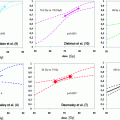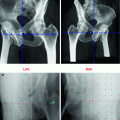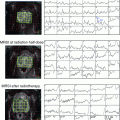© Springer-Verlag Berlin Heidelberg 2014
Hans Geinitz, Mack Roach III and Nicholas van As (eds.)Radiotherapy in Prostate CancerMedical Radiology10.1007/174_2014_1025Treatment of Clinically Involved Lymph Nodes
(1)
Department for Radiation Oncology and Cyberknife Cente, Charité – University Medicine Berlin Campus Virchow-Clinic , Augustenburger Platz 1, 13353 Berlin, Germany
Abstract
Today long-term survival in patients present with lymphatic disease is not uncommon although treatment approaches for prostate cancer patients with pelvic nodal disease without further metastatic spread is highly individual as no clear evidence on the superiority of any approach exists. Practical aproaches can be extrapolated from studies on high-risk patients.
Abbreviations
ADT
Androgen deprivation therapy
CSS
Cancer-specific survival
DFS
Disease free survival
DSS
Disease-specific survival
EBRT
External beam radiotherapy
ePLND
Extensive pelvic lymph node dissection
FU
Follow-up
LAPC
Locally advanced prostate cancer
LN
Lymph node
PFS
Progression-free survival
OS
Overall survival
1 Treatment of Clinically Involved Lymph Nodes
Lymph node metastases are a major prognostic factor in prostate cancer (Gervasi et al. 1989). Studies correlating the number of positive lymph nodes with cancer outcome show a negative trend for progression-free survival (PFS) and overall survival (OS) with increasing nodal tumor burden (Boorjan et al. 2007; Briganti et al. 2009).
Since the dawn of the PSA-era a shift toward early localized disease has occurred and the relative number of lymph node-positive prostate cancer patients has decreased (Palapattu et al. 2004). Nowadays the prevalence of pN+ disease in RRP-series is 2.5–5 % (Nguyen et al. 2009; Paul et al. 2009), a cN+ situation is even more rare. Data solely concerning the subgroup of cN+ patients is sparse and hence the optimal treatment approach for clinically LN-positive prostate cancer patients is unclear. Evidence can only be extrapolated from large studies either pooling stage III-IV patients (thus also including locally advanced T3-4 patients or pN+ patients with histologically proven nodal metastases) or studies on “high-risk” patients (which might also include patients with a statistically high risk for lymphatic disease predicted by nomograms without overt metastatic disease).
Although the 7th edition of the AJCC cancer staging manual groups N+ and M+ patients together as stage IV, today long-term survival in patients with lymphatic disease is not uncommon. According to the current NCCN treatment guideline on prostate cancer (version 2.2014) cN+ patients should either receive ADT alone or RT in conjunction with 2–3 years of neoadjuvant/concomitant or adjuvant ADT.
Patients unable or unwilling to undergo any treatment can also be offered observation. Due to the fact that even in patients with node-positive prostate cancer the onset of symptomatic disease progression might take months to years, observation might prove a reasonable approach in elderly patients or patients unable or unwilling to go through local or systemic treatment. EORTC 30891 looked at histologically confirmed prostate cancer patients (T0-4) with or without nodal involvement (cN0-2) without metastatic disease (M0) ineligible for local treatment and randomized between immediate and deferred ADT. In the delayed treatment arm ADT was initiated when symptomatic disease progression occurred. At a median FU of 7.8 years there was a small but statistically significant difference concerning OS favoring immediate ADT of 42 versus 48 %. An advantage in DSS or symptom free survival could not be shown. Median time to initiation of ADT in the deferred arm was 7 years (Studer et al. 2006).
Stay updated, free articles. Join our Telegram channel

Full access? Get Clinical Tree






